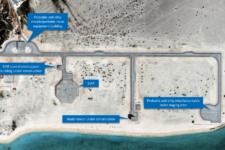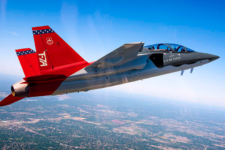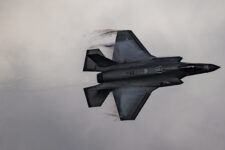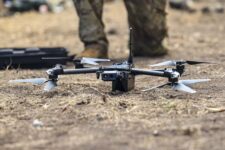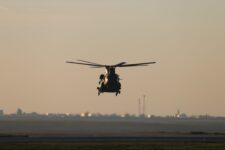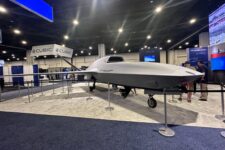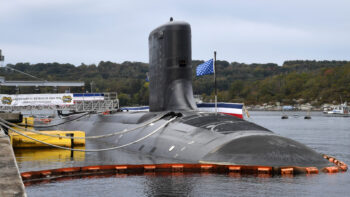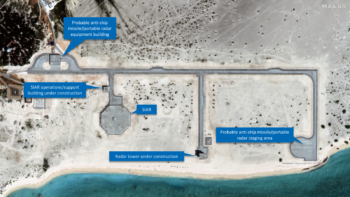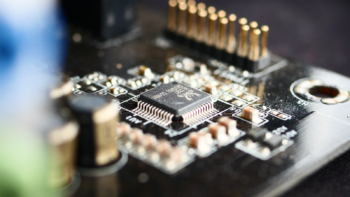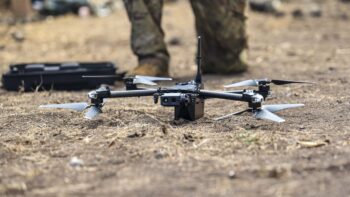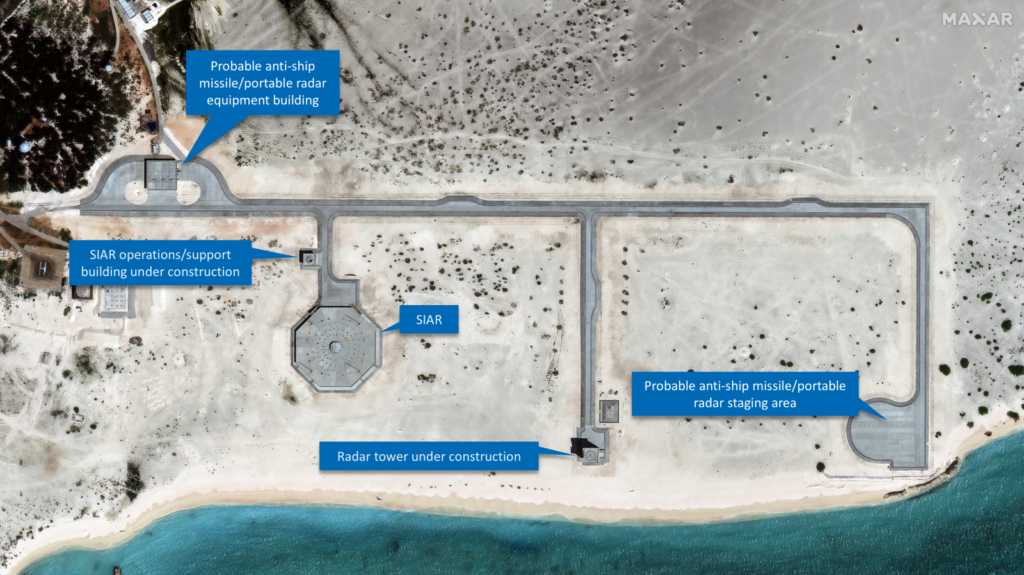
Triton Island in September 2024. Satellite imagery disputes earlier assumptions that Beijing was building a 600-metre runway, revealing instead the development of a sophisticated counter-stealth radar system and a suspected launching point for an anti-ship missile battery. (Photo:Maxar via Chatham House)
SYDNEY — As China increasingly engages in what the US calls dangerous behavior against its regional neighbors in the contentious South China Sea, Beijing also aims to raise its situational awareness there with new radar facilities on a tiny island, according to a report by Chatham House researchers.
“New satellite images reveal how the Chinese military is dramatically expanding its capabilities on Triton Island, which looks set to become a one of Beijing’s key signal intelligence bases in the South China Sea,” noted the Oct. 17 report. “Once completed, the radar system would significantly increase China’s signals intercept and electronic warfare capabilities across the disputed Paracel Islands archipelago and add to a wider surveillance network spanning much of the South China Sea.”
Authors, Chatham House’s John Pollock and Damien Symon, added, “The enhanced facility on Triton is likely to offer a challenge to China’s competitors in the region and internationally.”
The new facilities are not, as had been previously reported, the likely beginnings of a runway, they say, noting that it sports what they believe to be “construction of a new radar system, known as SIAR — synthetic impulse and aperture radar — which purportedly detects stealth aircraft.”
The radar “will form what is believed to be a wider network of at least three overlapping counter-stealth radars built across Chinese bases in the South China Sea over the past decade, including on Hainan Island, home to several Chinese naval bases,” the Chatham House analysts write. In addition to the radar and other facilities, the Chatham House authors say some of the facilities appear to be for signal intelligence gathering.
“For Vietnam, which is rapidly expanding its own bases in the South China Sea, the intelligence structures on Triton would significantly diminish its capacity to operate undetected in the area,” the Chatham report says. “Alongside existing radar on Triton which can detect sea-going vessels, Beijing will likely have the potential to track Vietnamese air movements and gain forewarning of Hanoi’s maneuvers in the area, including efforts to access oil and gas deposits.”
The positioning of the radar on Triton, less than 200 miles south of Hainan, is telling, says J. Michael Dahm, an expert at the Mitchell Institute.
“SIAR radars cannot see over the curve of the Earth, which means there is a gap in China’s air surveillance coverage between Subi Reef and Hainan Island. The Triton Island site will help close that gap,” said Dahm in the Chatham House report.
The aim, he suggests, is to give China contiguous counter-stealth radar coverage of the South China Sea.
Malcolm Davis, a China and defense expert at the Australian Strategic Policy Institute, acknowledged to Breaking Defense the possible risks of the new Chinese facility but suggested the capabilities it provides could be better judged once the facility is completed. Much will depend on the counter-stealth value of the radar in particular and which individual platforms it can track, he explained — specifically drawing on F-35A, B-21 and F-22 aircraft as examples, not to mention coming sixth-generation platforms.
“The station will probably complicate military operations in peace time across the South China Sea but simply prove to be a juicy target in time of war,” he noted.
“Also, it would need to be defended against a full range of land-attack munitions, or even hypersonic weapons that could emerge in western arsenals in coming years. No matter how sophisticated a radar, it is, at the end of the day, a stationary target that can be destroyed, and [air defense systems] can be overwhelmed,” Davis said. “The application of advanced loitering munitions and swarming drones might make what is probably a very expensive investment a poor one. The radar doesn’t look that well defended to me.”
He said loyal wingman aircraft, known as Collaborative Combat Aircraft (CCA), and armed drones would be “the obvious counter-response here.”
Chatham House authors write that the radar on Triton boasts a “distinctive octagonal structure, which resembles another SIAR system built by China on Subi Reef in the Spratly Islands, south of the Paracels, in 2017. A half-completed tower also sits near the SIAR radar on Triton, which is likely to be the operations center.” That design could make it even easier to find and destroy in war time.
There may be defensive works installed soon, the analysts say: “The satellite images reveal other building projects on Triton. One is a large pad at the end of the road network which will probably be used as a launching point for a mobile anti-ship missile battery. The building at the northeast end of the road is probably a storage building for missile transport vehicles.”
“‘The desire to strengthen control over these resources may explain why China is fortifying Triton Island,'” said Bill Hayton, an expert at Chatham House’s Asia-Pacific program, in the article. “The developments might be a warning that China is planning to mount another drilling expedition,” he suggested.
